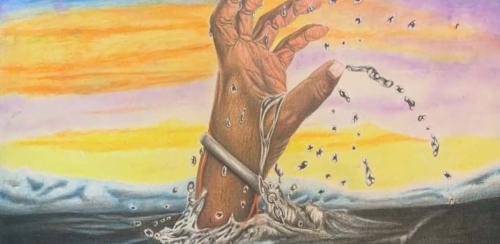
We are pleased to announce that the archives of the reSentencing journal are now available for research at Tufts Archival Research Center. The journal, a project of the Tufts University Prison Initiative of the Tisch College of Civic Life (TUPIT), was published in 2022, and contains 150 stories, poems, essays, photographs, artworks, and letters created by people across the country impacted by the prison system. The archival collection includes nearly 700 submissions that could not be included in the published journal due to space constraints.
This collection is a wonderful resource for people interested in exploring 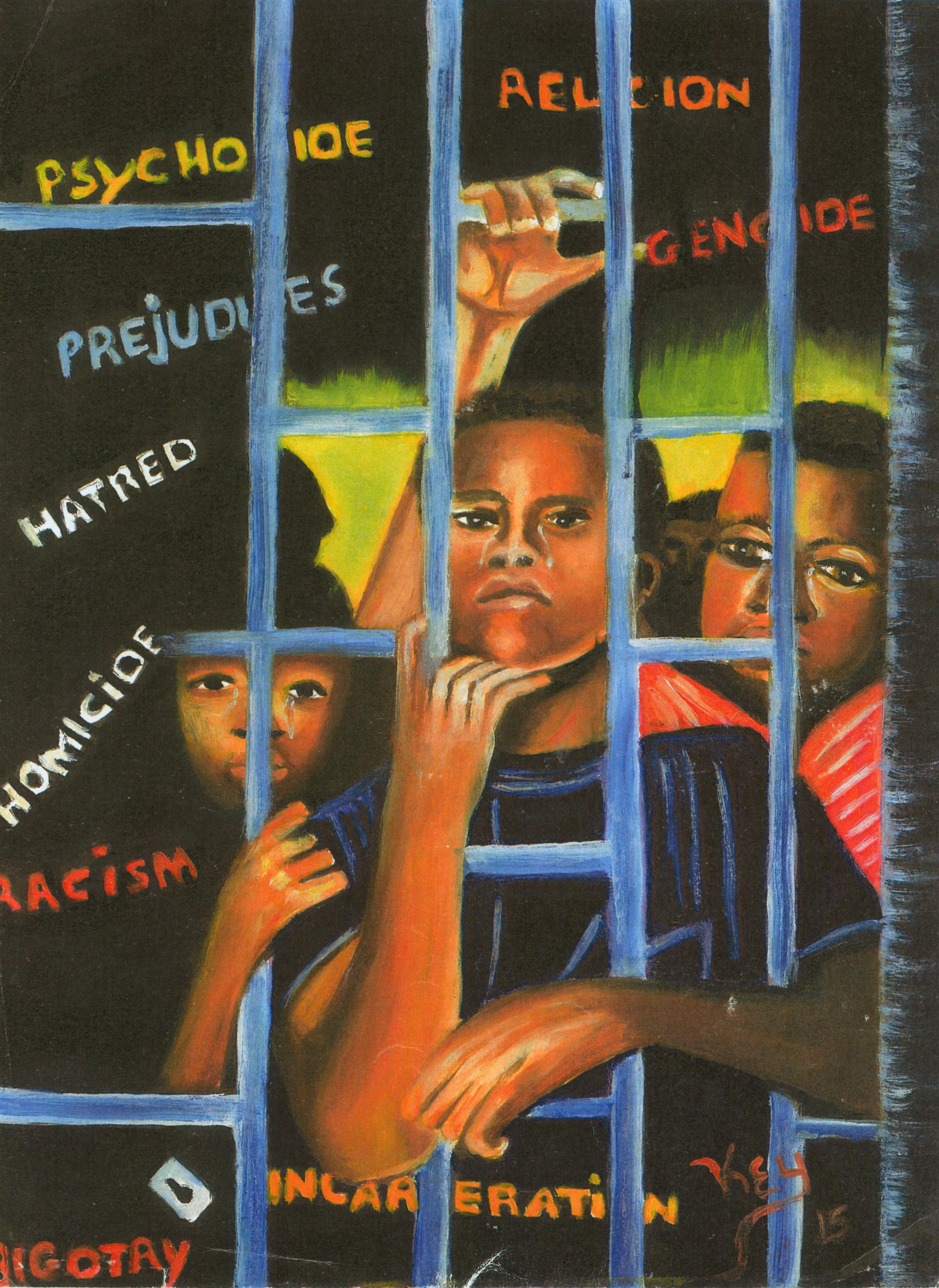 individuals’ relationships with the prison industrial system through an artistic lens. The submissions to the journal include stories, poems, essays, photographs, artwork. The collection also contains letters from incarcerated individuals across the United States. The bulk of the material was created in 2021 for the 2022 edition of the reSentencing journal and includes both analog and digital submissions.
individuals’ relationships with the prison industrial system through an artistic lens. The submissions to the journal include stories, poems, essays, photographs, artwork. The collection also contains letters from incarcerated individuals across the United States. The bulk of the material was created in 2021 for the 2022 edition of the reSentencing journal and includes both analog and digital submissions.
The collection was transferred to TARC by TUPIT in 2022. Together, TARC and TUPIT discussed and strategized on the best methods to make all of the submissions to the journal available to the public. This work included obtaining consent from all submitters and discussing access points and cataloging and metadata issues needed to make the submissions available digitally through the Tufts Digital Library. Archivists at TARC then worked to process the collection and digitize all the submissions so that they could be available to researchers online. You can browse the artistic submissions on the Tufts Digital Library. 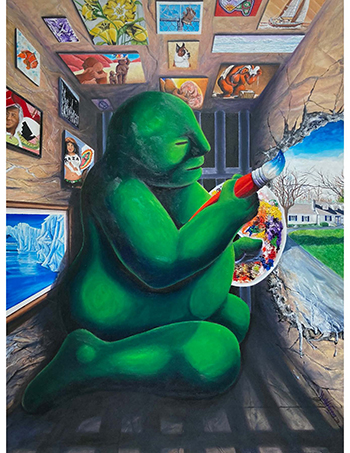
Tufts University Prison Initiative of the Tisch College of Civic Life (TUPIT) responds to the problems of mass incarceration and racial injustice by connecting Tufts faculty and students with incarcerated and former incarcerated peoples. The program currently teaches two cohorts of students at MCI-Concord, a medium-security men’s prison in Massachusetts. The students first enroll at Bunker Hill Community College to earn associate degrees in liberal arts and then enroll at Tufts University to earn bachelor’s degree in Civic Studies. TUPIT also provides courses in a Civil Studies certificate program for people directly impacted by incarceration. The organization also connects students from the Tufts campus with students in prison and provides education to the Tufts campus community through symposia, speaking events, films, and exhibits.
The TUPIT program began in 2016 when director Hilary Binda created the college prison program with support of the Jonathan M. Tisch College of Civic Life and the University Office of the Provost. Binda established a partnership with the Massachusetts Department of Corrections (MA DOC), to create the degree behind bars program with partner school Bunker Hill Community College. She created the Tufts Inside-Out course with the support of the MA DOC and Suffolk County facilities, which connects students from the Tufts and prison campuses. The Degree Program expanded to include the Tufts Education Re-entry Network (TERN) and through this group developed MyTERN, a year-long certificate program in Civic Studies. MyTERN collaborates with community organizational partners such as Project Place, the Boston Mayor’s Office of Returning Citizens, and Dorchester Bay Community Development Corporation.
TUPIT’s journal, reSentencing, is an art and literary publication that includes poems, stories, essays, and visual art pieces created by current and formerly incarcerated individuals. TUPIT released its first edition of the reSentencing Journal in August 2022. These creative works often, but not always, discuss 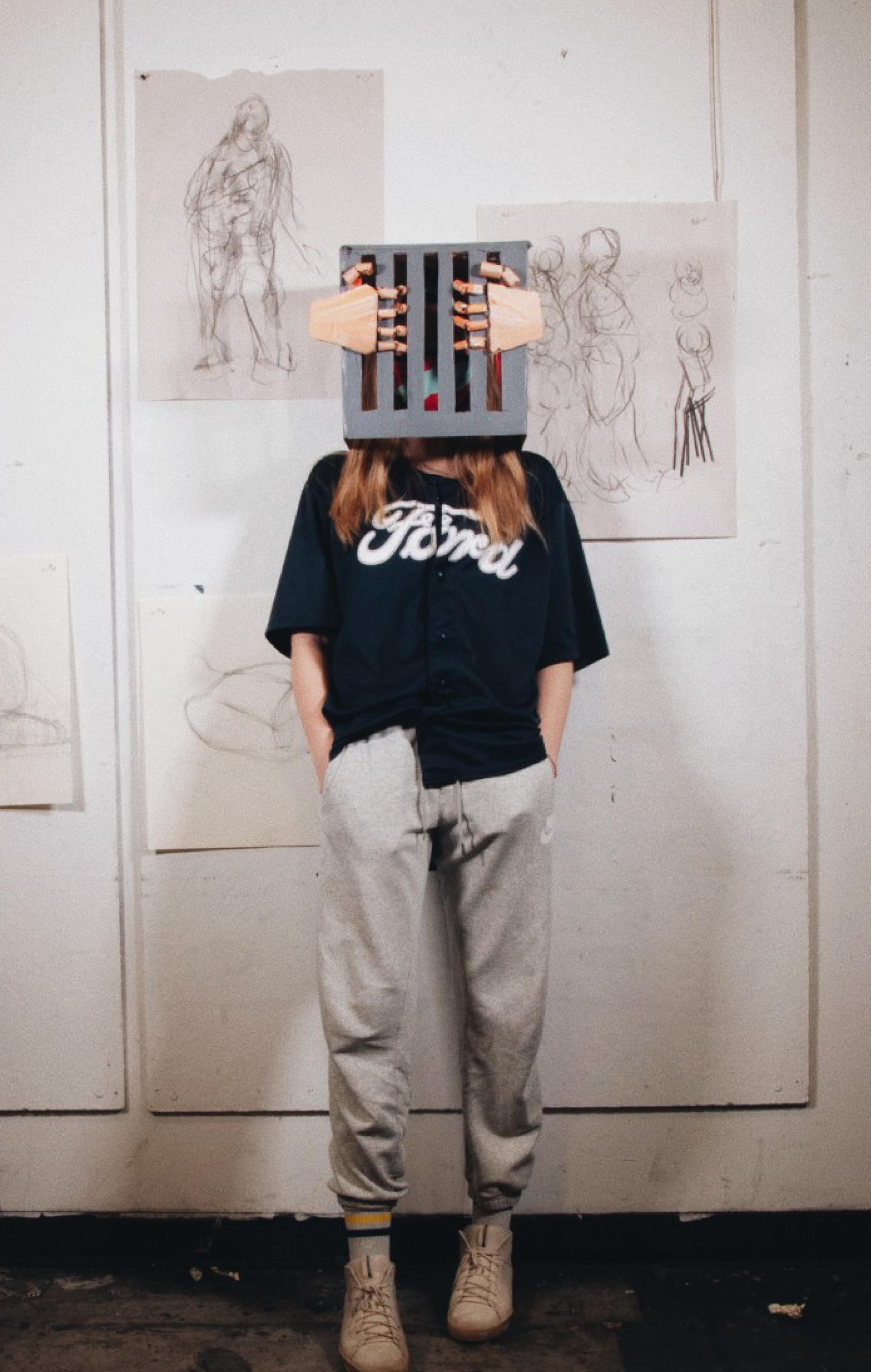 the effects of the prison industrial and criminal justice systems on the artist. Some of the submitters have participated in a prison education program with TUPIT or another university. The submissions for the first journal were evaluated by established writers, artists, and scholars, some affiliated with NYU, MIT, Tufts, U Mass, and Yale. The reSentencing advisory board includes Reginald Dwayne Betts, George Chochos, Michelle Daniel Jones, Helen Elaine Lee, Sandra Lim, and ZZ Packer, among other artists and writers. The completed journal was sent to all contributors along with a small monetary compensation. Future editions of the journal are planned.
the effects of the prison industrial and criminal justice systems on the artist. Some of the submitters have participated in a prison education program with TUPIT or another university. The submissions for the first journal were evaluated by established writers, artists, and scholars, some affiliated with NYU, MIT, Tufts, U Mass, and Yale. The reSentencing advisory board includes Reginald Dwayne Betts, George Chochos, Michelle Daniel Jones, Helen Elaine Lee, Sandra Lim, and ZZ Packer, among other artists and writers. The completed journal was sent to all contributors along with a small monetary compensation. Future editions of the journal are planned.
The visual artwork in this collection is varied in medium and subject matter. Many of the artists chose to depict their own relationship to incarceration and the criminal justice system. They used charcoal, cardboard, collage, acrylic, wire, fabric, pencil, and their innate creativity to communicate their messages. However, others chose to create beauty separate from their incarceration. The artists brought deep emotion and love to these pieces, often dedicating artwork to or depicting loved ones.
The written work within this collection is just as varied and emotional. Many of these pieces defy genre, but generally they fall into categories of poetry, short fiction, and essay. Many of these writers tell the stories of their lives in and out of prison. They share their pain and joy with the reader. Some of these works are typed, others handwritten. It is a pleasure and privilege to read these works and feel connected to the writers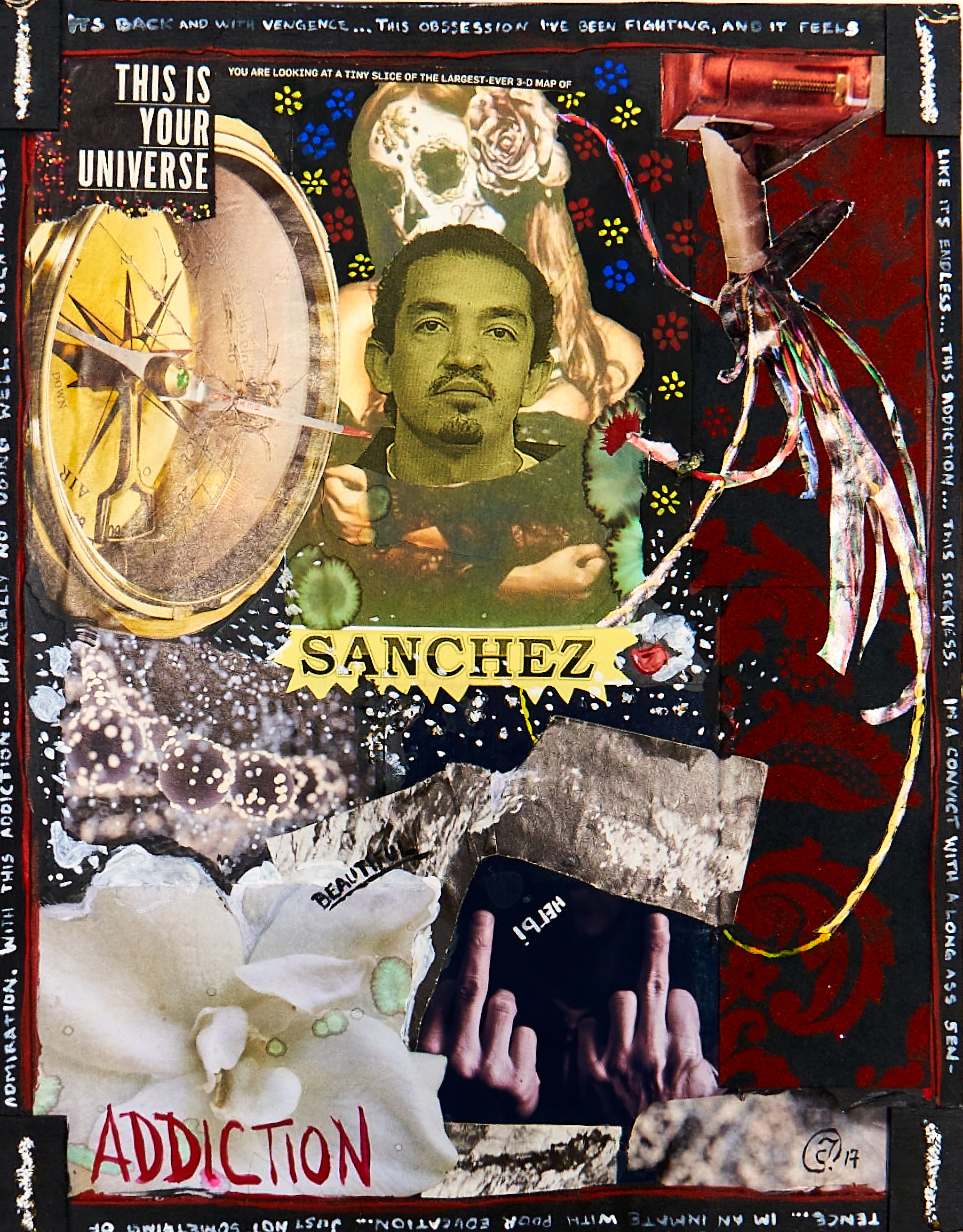 who created them.
who created them.
In addition to the creative work submitted, many folders contain correspondence related to the submissions, often discussing the author’s motivation to submit to the journal or contextual information about the submitter’s life. Submissions may also contain information about the artist or author, including (not consistently) name, age, biographical date, address, prisoner number, sentencing and conviction details, phone numbers, email address, and information about their families. The folders themselves are closed to researchers, but all artistic and literary submissions are available through the Tufts Digital Library.
Some of these written and visual works are currently on display in Barnum Hall in an exhibit designed by TUPIT. The first volume of the reSentencing Journal is available for purchase.
For more information about this collection please see the finding aid. For more information on how to access this collection, please contact Tufts Archival Research Center.







